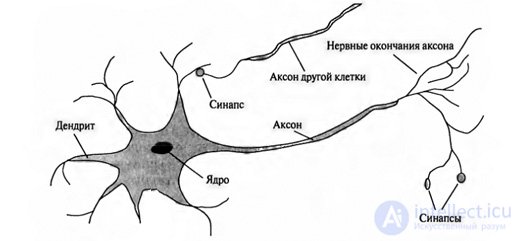Lecture
Neurology is a science dedicated to the study of the nervous system, in particular the brain. One of the greatest mysteries that defies scientific description is the definition of how the brain provides thinking. The understanding that thinking is somehow related to the brain has existed for thousands of years, because people have discovered that severe blows to the head can lead to mental breakdown.
In addition, it has long been known that the human brain has some important features; still around 335 BC Aristotle wrote: "Of all animals, only man has the largest brain compared to its size." Nevertheless, widespread recognition that the brain is a container of consciousness, occurred only in the middle of the XVIII century. Prior to this, the heart, spleen and pineal gland (epiphysis) were considered as possible sources of consciousness.
Studies of aphasia (speech disorders) in patients with brain damage, conducted by Paul Brock (1824–1880) in 1861, reawakened interest in this scientific field and served as evidence for many medicine representatives of the existence of localized areas in the brain responsible for specific cognitive functions.
For example, this scientist showed that speech formation functions are concentrated in that part of the left hemisphere, which is now called the Broker zone. By that time, it was already known that the brain consists of nerve cells, or neurons , but only in 1873, Camillo Golgi (1843-1926) was able to develop a reliable method that allows you to monitor individual neurons in the brain. This method was used by Santiago Ramon and Kahal (1852–1934) in his pioneering studies of the neural structures of the brain.
Scientists now have some information about how separate areas of the brain and the parts of the body that they control or from which they receive sensory data are connected. It turned out that such a binding can drastically change within a few weeks, and some animals, apparently, have several options for such a binding. Moreover, it is not entirely clear how other areas can take over the functions of damaged areas. In addition, there are almost no sound theories about how information is stored in the memory of an individual.
Measuring the activity of the intact brain began in 1929 with the invention of the electroencephalograph (EEG) by Hans Berger. Developments in the field of imaging based on functional magnetic resonance allowed neurologists to obtain extremely detailed images of brain activity, which makes it possible to measure the characteristics of physiological processes that are associated with ongoing cognitive processes in some interesting ways. These opportunities for research are becoming even wider due to the progress in recording the neural activity of an individual cell. But, despite these successes, scientists are still very far from understanding how any of these cognitive processes actually take place.
 |
| Parts of a nerve cell, or neuron. Each neuron consists of a cell body (or soma), which contains the cell nucleus. A number of short fibers, called dendrites, and one long fiber, called an axon, branch off from the cell body. The axon is stretched for a long distance, much greater than that shown in the scale of this figure. Typically, axons are 1 cm long (which is 100 times the diameter of the cell body), but can reach 1 meter. A neuron creates connections with other neurons, which can range from 10 to 100,000 at the junction points called synapses. Signals propagate from one neuron to another using a complex electrochemical reaction. These signals control brain activity during a short interval, and also cause long-term changes in the state of the neurons and their connections. It is believed that these mechanisms are the basis for learning in the brain. Information processing mainly takes place in the cerebral cortex, which is the outermost layer of brain neurons. Apparently, the main structural unit is a tissue column, having a diameter of about 0.5 mm and a length of the entire depth of the cortex, the thickness of which in the human brain is about 4 mm. Each column contains approximately 20,000 neurons. |
Nevertheless, work in the field of neuroscience makes it possible to make a truly surprising conclusion that the joint work of simple cells can lead to the emergence of thinking, action, and consciousness, or, in other words, that the brain produces intelligence. After this discovery, the only really existing alternative theory remains mysticism, whose adherents proclaim that there is a certain mystical space, which is beyond the limits of physical experience in which the mind functions.
The brain and the digital computer perform completely different tasks and have different properties. In a typical human brain, there are 1000 times more neurons than logical elements in a typical high-end computer processor. In accordance with Moore's law, a prediction can be made that the number of logical elements in a processor will become equal to the number of neurons in the brain by about 2020.
Of course, these predictions say little; in addition, this difference in terms of the number of elements is insignificant compared with the difference in switching speed and degree of parallelization. Computer chips can execute a single command in less than a nanosecond, while neurons act millions of times slower.
But the brain a hundredfold compensates for this lack, since all its neurons and synapses act simultaneously, whereas most modern computers have only one processor or a small number of processors. Thus, even though the computer has the advantage of more than a million times in the physical switching speed, it turns out that the brain, compared to it, performs all its actions approximately 100,000 times faster.
Comments
To leave a comment
Connection with other sciences and cultural phenomena
Terms: Connection with other sciences and cultural phenomena